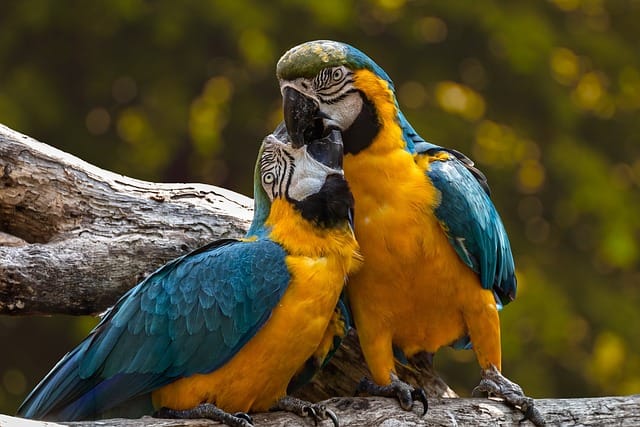Creating the ideal habitat for your exotic bird is essential for their health, happiness, and longevity. Whether you own a parrot, finch, or cockatiel, providing a safe, stimulating, and comfortable environment ensures your feathered friend thrives. Let’s explore everything you need to know about building the perfect home for your exotic bird.
1. Choosing the Right Cage
The cage is your bird’s primary home, so selecting the right one is critical.
- Size:
- Small birds (e.g., finches, budgies): Minimum cage size is 18 x 18 x 18 inches.
- Medium birds (e.g., cockatiels, conures): 20 x 20 x 20 inches or larger.
- Large birds (e.g., macaws, African Greys): 36 x 48 x 48 inches or more.
- Bar spacing: Ensure the spacing is appropriate for your bird’s size to prevent escape or injury. For small birds, bars should be no wider than ½ inch apart.
- Shape: Rectangular cages are better than round ones, as they provide a sense of security.
2. Perches and Accessories
Birds spend most of their time on perches, so variety is key to promoting healthy feet.
- Types of perches:
- Natural wood perches (e.g., manzanita, java wood) for exercise and grip.
- Rope perches for comfort.
- Avoid sandpaper perches, which can cause foot injuries.
- Other accessories:
- Ladders, swings, and mirrors (if suitable for your bird species).
- A bird bath or misting bottle for cleaning feathers.
3. Safe and Stimulating Toys for Exotic Bird
Birds are intelligent and curious creatures that need mental stimulation to prevent boredom and stress.
- Toy types:
- Chewable toys made from untreated wood or natural fibers.
- Foraging toys to mimic their wild instincts.
- Bells, ropes, and puzzles for entertainment.
Pro tip: Rotate toys regularly to keep your bird engaged and curious.
For more enrichment ideas, check out The Social Lives of Exotic Birds: Why Companionship Matters.
4. Placement of the Cage for Exotic Bird
Where you place the cage can significantly impact your bird’s well-being.
- Ideal location:
- A bright, well-ventilated area away from drafts and direct sunlight.
- A room where the family spends time, like a living room, to promote social interaction.
- Avoid:
- Kitchens (due to fumes from non-stick cookware).
- Areas near windows with direct exposure to predators or excessive noise.
5. Cleanliness and Maintenance
A clean habitat is vital for preventing illness.
- Daily tasks:
- Replace food and water.
- Remove droppings and soiled bedding.
- Weekly tasks:
- Wash perches, toys, and cage surfaces with bird-safe cleaners.
- Change cage liners or substrate.
6. Environmental Enrichment
Simulating a natural environment can boost your bird’s happiness.
- Add plants: Use bird-safe indoor plants like spider plants or bamboo to mimic a natural setting.
- Natural light: Place the cage near a window or use full-spectrum lighting to support their health.
7. Safety First: Preventing Hazards
Birds are sensitive and curious, so ensure their environment is free of hazards.
- Avoid toxic materials: Teflon-coated cookware, aerosol sprays, and certain houseplants like philodendrons.
- Secure the cage: Ensure the door latches tightly to prevent escapes.
- Monitor temperature: Keep the room between 65°F and 85°F, depending on the species.
Final Thoughts
Creating the perfect habitat for your exotic bird takes planning and care, but the reward is a happy and healthy pet. By providing a safe, spacious, and stimulating environment, you’re setting the stage for a lifelong bond with your feathered companion.
Want more tips for caring for exotic birds? Explore our Birds Category for expert advice and guides tailored to your needs!


1 thought on “How to Create the Perfect Habitat for Your Exotic Bird”